LEMONADE MAKER
SECOND EDITION BOOK TOUR
2025 PRESS TOUR
Lemonade Maker Press Tour begins August 2025
Follow Thomas Minieri’s media tour for the highly-anticipated Second Edition of Lemonade Maker—the cult-classic entrepreneur survival guide. See the interviews, features, and spotlights that are turning heads and rewriting the rules of innovation.

Beyond the math: decoding the hidden biases that make or break your pricing strategy. When most entrepreneurs think about pricing, they imagine math problems: cost, margin, markup. But your customers don’t do math when they decide — they do psychology. In the video, we explored a $4.3 billion mistake made by a company that thought transparency would equal trust. Instead, it triggered confusion, suspicion, and backlash. The numbers weren’t wrong. The human brain was. This companion article to the Lemonade Maker® LIVE YouTube video below digs deeper into why — uncovering the biases and fallacies that secretly shape how people perceive value, fairness, and quality. Once you understand these, you stop “guessing” your price and start engineering it. 1. The Fairness Fallacy: Why Transparency Backfires Humans have an inborn sense of fairness — but it’s emotionally driven, not rational. When a company reveals its cost structure and profit margins, customers don’t think, “Oh, that’s fair!” They think, “Wait… why are they charging me that much more than it costs?” Even if the markup is industry standard, the moment you expose the inner workings, you invite people’s moral calculator to start whirring. They anchor to your cost rather than your value. This is called the Transparency Paradox — the more you try to prove honesty through openness, the more people assume there’s something to distrust. ✅ Strategic takeaway: Be transparent about outcomes, not costs. Customers will happily pay $10,000 for a mastermind that changes their life, but they’ll resent $5,000 if they think it’s based on hourly math. 2. Anchoring Bias: The First Number Wins Anchoring bias is one of the most powerful cognitive shortcuts in pricing psychology. Whatever number someone sees first becomes their subconscious “reference point.” That’s why a $1,997 offer feels like a deal when shown after a $10,000 coaching package — but expensive when shown after a $297 course. This is why luxury brands always lead with the highest-end item. They’re not expecting you to buy the $25,000 watch; they’re conditioning your brain to believe that $5,000 is reasonable. ✅ Strategic takeaway: Don’t just price your offers — sequence them. Show your premium option first. The human brain doesn’t evaluate prices absolutely, it evaluates them relatively. 3. The “Pain of Paying” Bias Every transaction activates the same neural pathways as physical pain. When customers hand over money, their brains literally say “ouch.” The bigger the purchase, the sharper the sting — unless you cushion it with meaning. When you shift focus from price to purpose, you reduce the pain of paying. That’s why nonprofit donors give more when they’re told a specific story (“This $50 feeds a child for a week”) instead of vague impact statements. In business, the same rule applies: attach a tangible, emotional outcome to every dollar. ✅ Strategic takeaway: Don’t describe your price — justify the transformation. Tell a story that makes the payment feel purposeful. 4. The Scarcity Bias: Why Abundance Can Kill Urgency Scarcity doesn’t just create FOMO — it activates survival instinct. When something feels limited, our primitive brain prioritizes it. But here’s the mistake many entrepreneurs make: they try to appear too available, thinking that abundance equals generosity. Instead, it triggers the opposite reaction — “If this is always available, it must not be that valuable.” The company in the video failed partly because they treated access like a commodity. They made their pricing public, open, and continuous. Customers stopped chasing and started comparing. ✅ Strategic takeaway: Controlled scarcity increases perceived value. Limit seats, access, or bonuses — but make the limitation feel authentic (time, capacity, expertise, or seasonality). 5. The Loss Aversion Bias: Why Discounts Don’t Always Work People are twice as motivated to avoid loss as they are to gain reward. That’s why free trials and “money-back guarantees” are powerful — they minimize perceived risk. However, too many entrepreneurs misuse this bias. They slash prices thinking it will trigger action, but all it does is reset the value anchor downward. The customer’s brain now links the product to a “discount” experience — and any future price feels like a loss. ✅ Strategic takeaway: Instead of discounts, frame offers as avoiding loss of opportunity. “Don’t miss your chance to join this cohort” performs better than “Save 30% if you act now.” 6. The Effort Justification Bias: The Harder It Is to Get, the More It’s Worth Psychology experiments show that people value something more if they had to work for it. It’s the same reason Harvard degrees, exclusive masterminds, and invite-only memberships carry prestige — effort and selectivity signal importance. The billion-dollar blunder from the video failed partly because it removed mystery and challenge. Customers didn’t have to earn, qualify, or commit — they could just compare. ✅ Strategic takeaway: Don’t make your offers too frictionless. Add an element of earned access. A simple application or pre-call quiz signals seriousness and boosts perceived value. 7. The Paradox of Choice: When More Options Kill Conversion One of the most counterintuitive findings in behavioral economics is that more choice equals fewer decisions. When customers face too many pricing options, their cognitive load spikes. Instead of choosing, they freeze or delay. Think of the last time you scrolled through 50 streaming options and ended up watching nothing. Same effect. ✅ Strategic takeaway: Use a three-tier pricing structure: Premium (anchor) Core (target) Entry (for lead capture) Three gives psychological comfort. More than that creates confusion. 8. The Halo Effect: How Perception of One Thing Affects All Things If your branding, storytelling, and delivery look premium, your pricing will feel fair — even if it’s high. Conversely, if your design, communication, or confidence appear weak, even a low price will seem steep. The Halo Effect is why entrepreneurs must obsess over presentation. Every pixel, phrase, and posture signals value subconsciously. ✅ Strategic takeaway: Never separate pricing strategy from brand perception strategy. Your price should feel inevitable, not arguable. The Next-Level Truth The psychology of pricing isn’t about manipulation — it’s about understanding the human operating system. People don’t buy based on math; they buy based on meaning, emotion, and narrative. The $4.3 billion pricing blunder happened because a brand trusted data but ignored bias. You can do the opposite: design pricing that aligns with how humans actually think. That’s not deception. It’s empathy at scale. Because when you master the biases that drive perception, you stop discounting your worth — and start pricing your impact.

For the last hundred years, society rewarded one kind of person: the specialist. The industrial age taught us that success came from picking a lane, learning it deeply, and staying there. Doctors, engineers, accountants, and marketers all built secure careers by mastering a single craft and repeating it faithfully for decades. That world is disappearing. The End of the Specialist Era For most of modern history, companies and schools were designed like assembly lines. Each person had a specific task, a narrowly defined role. That model worked beautifully when industries moved slowly, information traveled on paper, and “expertise” meant memorizing data. But specialization has a weakness—it depends on stability. When technology changes slowly, deep mastery pays off. When it changes every six months, the specialist struggles to keep up. Today, artificial intelligence can out-specialize almost any human. AI writes code faster than junior developers, designs logos in seconds, analyzes legal documents in minutes, and generates marketing campaigns overnight. Every year, new tools erase another layer of human routine. The advantage once held by narrow expertise is now held by machines. The Rise of the Generalist So, who wins in a world run by algorithms? The generalist. Generalists are connectors. They see patterns others miss. They draw insights from multiple fields and combine them into something new. They don’t compete with machines—they direct them. A generalist might not be the best coder or the best designer, but they know how design affects sales, how marketing shapes behavior, how data informs decisions, and how all of it connects to a larger strategy. They understand context, purpose, and human emotion—the elements AI still can’t replicate. In short: generalists turn knowledge into innovation. Entrepreneurship Is the Ultimate Generalist Training Entrepreneurship has always been a generalist’s game. To build a business, you must understand strategy, communication, finance, technology, psychology, and storytelling—all at once. You don’t need to master every skill, but you must understand how they work together. That’s why the next generation of entrepreneurs will hold the real advantage. As corporations automate departments, entrepreneurs will integrate them. As AI handles the technical “how,” human founders will focus on the “why”—vision, leadership, connection, and creative problem-solving. At Lemonade Maker® Academy , this philosophy drives everything we teach. We combine technical fluency with human mastery —because the leaders of tomorrow must be fluent in both code and conversation, algorithms and empathy. The Skills AI Can’t Replace Automation is accelerating, but some abilities remain uniquely human: Critical Thinking — Machines process information, but they don’t interpret meaning. The next generation must learn to question, synthesize, and see beyond the surface. Communication — In a world of short attention spans, the ability to inspire, persuade, and collaborate will define real leadership. Creativity & Strategy — AI can remix ideas; it can’t imagine new ones. Empathy & Ethics — Innovation without conscience creates chaos. The future will need leaders who understand people, not just data. These are the “lost arts” of modern education—the timeless disciplines that make technology useful rather than dangerous. Schools Aren’t Teaching This Anytime Soon Traditional education still prepares students for the old economy. It rewards memorization over innovation, conformity over creativity, and specialization over adaptability. Kids are told to choose a single career path before they’ve even seen the world. But the next generation’s greatest opportunities won’t exist inside those lanes. They’ll appear in the intersections—between technology and storytelling, between science and ethics, between data and design. That’s why the mission of Lemonade Maker® Academy is to train young generalists: thinkers who can blend disciplines, lead teams, and use technology as a tool, not a crutch. The New Definition of Smart In the 20th century, being “smart” meant knowing the right answers. In the 21st, it means knowing the right questions. AI already has the answers. The human advantage is curiosity, discernment, and the ability to frame problems in meaningful ways. Generalists excel here because they see how one idea influences another. They don’t just solve problems—they redefine them. Consider the entrepreneurs who are changing the world right now. None of them are pure specialists. Elon Musk bridges physics, business, and storytelling. Sara Blakely mixed design, marketing, and psychology. Steve Jobs fused art with engineering. Every great innovator operates at the crossroads of multiple worlds. A Generalist Generation The next generation will live in an economy that changes faster than any before it. Careers will evolve, industries will merge, and skills will expire overnight. But generalists won’t be afraid—they’ll adapt. They’ll understand how to learn, unlearn, and relearn. They’ll treat AI as an assistant, not a rival. They’ll be capable of launching ventures, leading teams, and solving problems no algorithm could anticipate. At Lemonade Maker® Academy , we call this future fluency: the combination of entrepreneurial thinking, technological literacy, and timeless human skills that make someone unstoppable in any era. We’re not teaching kids to avoid technology—we’re teaching them to master it and themselves. The Bottom Line The age of specialization was about depth. The age of AI is about range . The future will belong to those who can connect, adapt, and create—the generalists. And the best time to prepare for that future isn’t after graduation; it’s now. Because when the machines know how to do everything, the real question becomes: Who will still know why?

You’ve been lied to. Not once, not twice—at least five times. And those lies might be the very reason your business feels stuck. There’s an entire industry built around catchy slogans, half-baked psychology, and advice that sounds smart but collapses in the real world. Fake gurus and online coaches repeat these one-liners because they’ve never built a real company, so they rely on buzzwords that sell emotion instead of truth. Let’s unpack the five biggest lies—and expose the faulty logic behind them—so you can finally start thinking, acting, and scaling like a real entrepreneur. Lie #1: “Just 10X Your Business.” It’s the rally cry of the modern-day guru. “Just 10X your business.” It sounds so confident, so explosive, so easy. Who doesn’t want to multiply their results overnight? But there’s no giant red 10X button hiding under your desk. Scaling from $100K to $1M—or $1M to $10M—is not an act of motivation; it’s an act of architecture. It takes strategy, structure, systems, staffing, and steady innovation. Why It Sounds Good: “10X” appeals to our craving for clarity and speed. It compresses complexity into one thrilling phrase, giving your brain that jolt of “I can do this.” Psychologically, it’s the illusion of simplicity—what cognitive scientists call Cognitive Ease . When something sounds simple, we instinctively believe it’s true. The Fallacy: The 10X mantra commits the Oversimplification Fallacy and False Cause Fallacy . It implies that mindset alone causes massive growth, ignoring the hard mechanics of systems, processes, and scalability. The Trap: You start chasing explosive growth without the foundation to handle it. It’s like pouring rocket fuel into a go-kart—it might move fast for a second, but it’ll explode before you reach the finish line. The Analogy: That’s like saying, “Oh, just climb Mount Everest this weekend.” Sure—pack a jacket and some snacks, right? In reality, it takes training, planning, altitude conditioning, and a team. Business is no different. The Truth: Sustainable growth is never an accident. It’s built on strong systems, smart hiring, consistent data, and innovation that compounds over time. The real “10X” comes from the strength of your structure—not the hype of your headlines. Lie #2: “The Riches Are in the Niches.” This one has been repeated so many times it almost sounds sacred. “Niche down.” “Focus.” “Own your lane.” It sounds strategic, doesn’t it? But taken too far, this advice becomes a trap—one that boxes entrepreneurs into markets too small to ever scale. Why It Sounds Good: It feels like focus. In a world of chaos, niching down feels like clarity. You imagine laser-precision marketing and a tribe of loyal customers who see you as the expert in one specific thing. It’s comforting. The Fallacy: This is the Hasty Generalization Fallacy —assuming that what worked for one person or one market will automatically work for you. It’s also laced with Survivorship Bias —you see the one niche success story splashed all over social media, but never the hundred quiet failures. The Trap: When you niche too tightly, you shrink your potential market and stunt your growth. You may fill your personal schedule, but you’ll never build scalable systems. That’s the self-employment trap —you’re busy, maybe even profitable, but chained to a business that depends entirely on your personal effort. The Analogy: It’s like opening a vegan sushi restaurant in a small barbecue town. That concept might crush in New York City or Los Angeles, where demand is high, but in Savannah, Georgia? You’ll be serving seaweed to ghosts. The Truth: Specialization has its place—but only when it’s grounded in data, not dogma. Real entrepreneurs don’t just “niche down”; they study demographics, psychographics, and scalability. A niche can be powerful, but a narrow vision will kill you faster than competition ever will. Lie #3: “Get Paid What You’re Worth.” This one hits deep because it’s emotional. It flatters you. You’ve worked hard, you’re talented, and yes—you should be valued. But “Get paid what you’re worth” sounds empowering while quietly pushing you into a trap that’s nearly impossible to scale. Why It Sounds Good: It taps into your identity and self-esteem. It feels like fairness. You start believing that if you just raise your prices enough, everything else will fall into place. The Fallacy: This is the Appeal to Emotion Fallacy mixed with Oversimplification . It reduces an entire pricing strategy down to self-worth. In truth, customers don’t buy you—they buy your offer. And no business can grow if the only thing it’s selling is your personal time. The Trap: High-ticket pricing works fine for solopreneurs. But when you start hiring employees, the whole model collapses. Your team can’t replicate your personal magic, and you’ve built a company that can’t sell without you. You burn through leads faster, limit your audience to the top 1%, and live one client cancellation away from panic. The Analogy: It’s like saying, “Don’t open a grocery store—just sell one diamond-encrusted tomato for $1 million.” Sounds fun until the tomato spoils and your only customer moves away. The Truth: It’s far safer—and smarter—to build a business that generates healthy revenue from many customers instead of extreme revenue from a few. Price based on brand value and scalability, not ego. Build a model that your team can deliver and your customers can sustain. Lie #4: “Perfect Your Elevator Pitch.” This one’s the darling of old-school business networking. Entire organizations like BNI revolve around it—teaching entrepreneurs to rehearse 30-second monologues and deliver them every week to the same twenty people. The problem? You’re not closing million-dollar deals in an elevator. Why It Sounds Good: It promises control. If you can just say the perfect line, you’ll win the deal. It gives the illusion of power in a short, digestible burst of effort. The Fallacy: This is classic Oversimplification and False Cause —assuming that mastering a quick pitch directly causes customers to buy. It’s also the Bandwagon Fallacy , kept alive because everyone in those groups repeats it without question. The Trap: You spend countless hours perfecting your speech instead of building a marketing process. Real marketing happens in stages —first awareness, then curiosity, then interest, and finally conversion. The elevator pitch skips the entire journey and expects a miracle in thirty seconds. The Analogy: It’s like walking up to a stranger and proposing marriage on the spot. Even if they don’t run away screaming, they’re definitely not saying yes. The Truth: Stop polishing speeches and start creating systems. Your job isn’t to close the deal in one sentence—it’s to spark curiosity and move people down a path of trust and discovery. Awareness first. Curiosity second. Commitment comes last. Lie #5: “Define Your Value Proposition.” Of all the lies, this one sounds the most corporate and sophisticated. You’ll hear gurus say, “You just need to define your value proposition.” It sounds like something executives talk about over expensive coffee, so it must be important. But it’s often just as misleading as the rest. Why It Sounds Good: It feels strategic and grown-up. You imagine investors nodding when you recite it. It gives you the illusion of professionalism and precision. The Fallacy: This combines the Appeal to Authority and False Focus fallacies. It directs your attention inward—toward what you think your value is—instead of outward, toward what your customers actually care about. The Trap: Focusing on your personal value keeps you trapped in the self-employment trap . When your business revolves around your skills, your reputation, or your résumé, you can’t scale. The best you can do is make small, personal innovations. Real companies, by contrast, innovate at the brand level —creating systems, offers, and experiences that have value beyond any one individual. The Analogy: It’s like a band where only the lead singer gets the spotlight. That works—until he loses his voice. A real company builds an orchestra, not a solo act. The Truth: Your job isn’t to prove you are valuable—it’s to make your brand and offerings valuable. Customers buy transformation, not résumés. Build a company so good, the results speak for themselves. Red Flag Alert If you hear someone spouting these lines, treat it like a warning siren. These are the telltale phrases of fake gurus—people who’ve never built a real business but sure know how to sell one. They pitch shortcuts, quick fixes, and motivational sugar highs that feel good for a moment but leave you spinning in place. The Real Path Forward If you’re ready to stop chasing shiny advice and start building something that actually lasts—something scalable, sustainable, and real—then it’s time to get out of the fake-guru maze. Break free from the myths. Build systems, not slogans. Because hype fades fast—but strategy compounds forever. 👉 Click to discover how to build a company that scales for real.

They look alive. They talk fast. They sparkle under fluorescent lights. But don’t be fooled—many modern marketing agencies are undead. They feed on your budget, drain your confidence, and leave you lost in the fog of “strategy calls” and “retainer renewals.” Welcome to the world of Vampire Marketing Agencies — where clients become commodities and creativity becomes a cover story. The Rise of the Vampire Agency In theory, agencies exist to help your business grow. They’re supposed to bring clarity, expertise, and measurable results. But somewhere along the way, many stopped building and started feeding. They became addicted to retainers instead of results — billing month after month while delivering less and less. They don’t want progress. They want dependence. 1. They’ve Never Built a Real Business Most agency owners have never actually built a business outside of their own agency. They don’t know what it’s like to make payroll, hire employees, or fight through cash-flow chaos. Yet they’ll gladly tell you how to grow yours. Real entrepreneurs understand the fight. Fake ones hide behind buzzwords. 2. Overpriced Retainers — Mailbox Money for Nothing Vampire agencies love retainers — because it means guaranteed income, not guaranteed progress. They talk about “strategy alignment,” “restructuring campaigns,” or “data deep dives,” but the truth is simple: you’re paying them to look busy. If you’ve ever wondered what you’re actually paying for each month… you’re probably their favorite client. 3. Buzzwords That Prey on Confusion and Fear They thrive in the fog — using words like “omnichannel,” “synergy,” and “AI-powered optimization.” These aren’t strategies. They’re smoke screens. The more confused you are, the longer they can feed. They bank on your fear of “not understanding marketing,” keeping you dependent on their explanations and dashboards. 4. The AI Paradox — Faster Work, Same Prices AI has revolutionized marketing. It’s faster, smarter, and more efficient. So why are agencies still charging 2018 prices for 2025 automation? Because they’re not selling outcomes — they’re selling ignorance. AI has cut their work time in half, but your bill hasn’t budged. 5. The Emotional Hook — Prey on Your Pain When all else fails, they lean on empathy. They’ll say things like “We’re your partners,” or “We’re in this together.” Then they’ll invoice you for another $5,000 to “evaluate new directions.” They don’t want you to learn — they want you to lean. Trapped in the Fog You start with hope. You end with confusion. They lead you into a maze of metrics, reports, and retainer renewals — until you can’t tell what’s working or why you started. They suck the life out of your marketing budget, preying on confusion and fear while you slowly lose confidence in your own ability to lead. But here’s the truth: If you’ve fallen prey to a vampire agency, it’s not because you’re naïve — it’s because you were never given the knowledge to defend yourself. The Cure: Knowledge Lemonology® Strategy No. 1 — Confidence is Knowledge is the lesson of the day. As a young entrepreneur, I struggled with confidence too. I didn’t have a guide. I didn’t have a map. I just had mistakes — and the lessons they taught me. That’s when I learned: confidence doesn’t come from hype or bravado. It comes from clarity. When you understand what’s happening — when you know what good marketing looks like — the fear disappears. Confidence is the natural result of knowledge and experience. So, if you’re feeling insecure about your marketing, it doesn’t mean you’re incapable — it just means no one ever showed you how it really works. The Real Fix: Learn It. Build It. Own It. That’s exactly what we do at Lemonade Maker®. We help entrepreneurs gain confidence in marketing through: One-on-One Coaching — personalized strategy sessions that simplify the chaos. LIVE Workshops — hands-on training where you actually learn to do the work yourself. Implementation Assistance — our team helps you execute everything: websites, funnels, ad campaigns, video production, persuasive messaging, social media, automation, and AI. You’ll save thousands, take back control, and finally understand how your marketing works — without the vampires. So kiss your agency goodbye! Take back control. Gain clarity. Because the only real protection against confusion… is knowledge! 👊Take Back Control → Learn the truth. Gain the tools. And never get bitten again.

Every entrepreneur starts with the same dream — freedom, impact, and financial independence. But the numbers tell a sobering story: most small businesses never grow beyond survival mode. According to NAICS Association’s national dataset of over 17.7 million U.S. businesses , nearly: 78% produce less than $500,000 revenue per year 87.9% produce less than $1 million revenue per year And only ~1% exceed $10 million revenue per year That means fewer than 1 in 10 business owners will ever break the seven-figure mark — and fewer than 1 in 100 will reach eight figures. Even more striking: the JPMorgan Chase Institute’s study “Scaling to $1 Million” found that only a small fraction of small businesses reach $1 million in revenue within their first five years — regardless of owner experience or motivation. And among the tens of millions of non-employer businesses (solo entrepreneurs, freelancers, side hustlers), only 0.4% ever cross $1 million in annual sales. Let that sink in. Out of roughly 30 million solo businesses in the U.S., fewer than 120,000 ever make it to that milestone. The Self-Employment Trap Is Real If you’ve been running your business for years and still feel stuck — you’re not alone. Most entrepreneurs fall into what I call the Self-Employment Trap . It’s the illusion that simply working harder or surviving another year will eventually produce growth. But growth isn’t automatic. You can’t just “wait your way” to $1 million. Even businesses with a few employees can still be trapped here — because hiring help doesn’t equal scalability. If the owner is still the bottleneck for every decision, sale, or creative move, the business hasn’t truly grown; it’s just multiplied the workload. What actually happens is that many owners end up trapped inside their business — wearing all the hats, doing all the work, and mistaking motion for progress. The business provides some income, but not freedom. Some stability, but not scalability. They’ve built a job, not a company. That’s the tragic reality behind the statistics. The Turning Point: Mindset, Skillset, and Structure Breaking through the $1 million ceiling requires conscious transformation. That’s the foundation of the Lemonade Maker® Journey — a proven framework built from real entrepreneurial experience and data. Milestone 1: The Mindset Shift The first step is recognizing that your business will not grow on its own. Data makes this undeniable. You must choose to shift from survival to strategy. It’s about realizing that growth is a skill — not a side effect. Mindset shift means asking: “What got me here will not get me there.” Until you acknowledge that truth, you stay stuck in the trap. Milestone 2: Level Up Your Business Aptitude Once you’ve shifted your mindset, the next step is upgrading your skillset — because business growth isn’t luck, it’s literacy . There are three critical areas where most entrepreneurs have hidden gaps: Innovation Strategy – Learning how to think differently, spot hidden opportunities, and turn ideas into leverage. Marketing Strategy & Implementation – Understanding how modern marketing actually works — technology, AI, persuasion, and systems that attract leads automatically. Business Systems Development – Replacing chaos with structure: processes, automation, delegation, and measurement. These aren’t optional. They’re the missing links between a business that works because of you and a business that works without you. Milestone 3: From Mad Hatter to CEO The final transformation is identity. In the Lemonade Maker Method™, we call it escaping Mad Hatter Syndrome — that frantic stage where you’re wearing all the hats, trying to do everything yourself. Once you’ve shifted your mindset and built new skills, you can finally evolve into the true CEO of your company. You stop being the business — and start building the business. You trade exhaustion for leadership, chaos for clarity, and hustle for scale. That’s when you reclaim the freedom that made you start in the first place. Where You’re Going: Freedom, Profit, and Legacy The goal isn’t just hitting $1 million in revenue. It’s building a business that creates life-changing profit, time freedom, and legacy . The entrepreneurs who cross that line aren’t the ones who got lucky. They’re the ones who got strategic. They faced the data, broke the old patterns, and rebuilt their business on innovation, marketing, and systems — the same pillars we teach inside Lemonade Maker Strategies . Take Action If you’re feeling stuck, you’re exactly where the transformation begins. Book a free strategy call with me, Thomas Minieri, and we’ll: Expose the traps keeping you stuck Identify the gaps in your marketing, innovation, and systems Map a clear path to help you scale past $1 million — and beyond! Most businesses never make it there, but yours can — if you decide to. 👉 Free Webinar: The Self-Employment Trap Sources NAICS Association, Counts by Annual Sales 2024 ( naics.com ) JPMorgan Chase Institute, Scaling to $1 Million in Revenue ( jpmorganchase.com ) Forbes (2025), Number of Million-Dollar One-Person Businesses Doubles in One Year ( forbes.com )

If you’re relying on referrals and word-of-mouth to grow, you’re not building a business—you’re surviving on table scraps. Yes, scraps can keep you alive. But they’ll never feed a real company. If you want a feast—steady leads, predictable growth, and a brand that commands value—you need more than goodwill and luck. You need a strategy. The Hidden Problem With “Free” Referrals Referrals feel productive because they occasionally produce a few leads. That tiny trickle is dangerous; it convinces you to double down on a tactic that can’t scale. The result is the Self-Employment Trap : you stay busy enough to feel needed, but never free enough to build. Here’s why: Referrals are random. You can’t schedule them, forecast them, or optimize them. That means you can’t plan hiring, inventory, cash flow, or expansion. Referrals are not in your control. You’re dependent on other people’s timing, memory, and generosity. “Hope marketing” is not a system. Referrals reward convenience, not innovation. When leads drift in, you postpone the hard (and valuable) work of clarifying your offer, pricing strategically, building funnels, and testing campaigns. In other words, referrals keep you lost in the Marketing Maze —wandering from tactic to tactic, unsure what to do next, because the inputs aren’t predictable and the outcomes aren’t trackable. Retention vs. Acquisition: Stop Treating Dessert Like Dinner Referrals and word-of-mouth are customer retention mechanics, not customer acquisition systems. When you deliver an amazing product or service, happy customers sometimes talk. That’s retention—loyalty, repeat purchases, upgrades. Acquisition is different. Acquisition requires awareness —deliberate messaging that reaches a defined audience with a clear value proposition and a repeatable path to purchase. That’s marketing. That’s brand. That’s a pipeline. Your customers may love you, but it’s not their job to market you. They’re busy solving their own problems, growing their own careers, and living their own lives. Expecting them to be your sales team is passing the buck . Employee Thinking vs. CEO Thinking When you live on referrals, you naturally think like a technician who bills hours: “What’s my rate? Who do I know?” That’s employee thinking. CEOs think differently: From “my rate” to “our value.” Stop pricing yourself; start pricing outcomes backed by assets (offers, content, IP, systems). From personal reputation to brand equity. Innovation must live at the company level , not just in your personal skillset. From ad-hoc to engineered. CEOs install systems—lead gen, nurturing, conversion, fulfillment—so the business performs even when they’re not in the room. Referrals reward the old identity. Strategy forges the new one. The BNI Detour: Why It Feels Useful But Keeps You Small BNI promises a network effect: show up, give referrals, get referrals. You might snag a few leads. But is that a growth engine—or a weekly obligation that siphons time, money, and focus from building real marketing assets? Common traps: False promise of scale. A chapter can only pass around so many “warm introductions.” That ceiling isn’t moving. Emotional pressure. You’re expected to produce referrals for others—often outside your true network or audience—creating stress and performative behavior that looks like marketing but isn’t. Sunk-cost loyalty. You’ve paid dues, invested time, and built relationships—so you keep attending long after ROI flattens. That’s the psychological trap: “I can’t quit now; I’ve already invested.” Could BNI deliver a client or two? Sure. But that’s not a system. It’s a side door. If your calendar and cash depend on that door, you’re still in the Marketing Maze . What Real Marketing Looks Like Real marketing is engineered, testable, and scalable . It looks like: A differentiated brand promise that makes you unmistakable in the Sea of Sameness . Clear positioning and offers that connect pain → promise → proof → plan. A repeatable awareness engine (content + ads + partnerships) to get in front of the right audience consistently. A capture and nurture system (lead magnets, email flows, retargeting) to turn attention into conversations. A conversion process (call scripts, proposals, guarantees, pricing strategy) that closes predictably at healthy margins. Measurement and optimization so every quarter gets smarter—and cheaper—per acquisition. That’s how you move from table scraps to a feast. From self-employment to CEO . “But Word of Mouth Is How We Grew at First…” Great. Early traction proves people want what you have. Now professionalize it: Bottle the reasons people refer you and build those reasons into your homepage, headlines, case studies, and offers. Systematize proof with testimonials, before/after snapshots, and data-backed outcomes. Amplify the signal with targeted campaigns so thousands hear what only dozens knew. Keep the spirit of word-of-mouth. Replace the randomness with strategy. The Lemonade Maker® Way Out If you’re stuck in the Marketing Maze—tempted by referral groups like BNI, frustrated by inconsistent leads, and craving a predictable growth model—this is your call to level up. Lemonade Maker Strategies® gives you the full stack: Strategy + Implementation. We don’t just tell you what to do; we help you build it—offers, funnels, ads, content, and conversion playbooks. Differentiation by design. Stand out with brand-level innovation, not one-off tactics. Predictable lead flow. Move from random referrals to reliable pipelines you can forecast and scale. CEO operating system. Replace “doer mode” with systems that free your time and increase your company’s value. And if you want the fastest path, 1:1 coaching with me—Thomas Minieri, entrepreneur, franchisor, and author of Lemonade Maker—compresses years into quarters. We’ll diagnose the traps, close the gaps, and install the engine that feeds your business real revenue. Your Next Step If you’re: Getting a few referral crumbs but never a feast, Considering BNI or other referral groups because you’re unsure what else to do, Ready for consistent, predictable leads—and a brand that can scale, Book a free strategy call with me, Thomas Minieri. We’ll map your path out of the Self-Employment Trap , design a marketing model you can count on, and set you up to build a unique, profitable, and scalable business—one that boosts your revenue, gives you your time back, and builds a legacy you’re proud of. 🍋 Book your free call now and escape the Marketing Maze →

BNI calls itself the world’s leading “referral organization.” On the surface, it sounds great—join a local chapter, meet every week, exchange referrals, and grow your business. But here’s the truth most entrepreneurs eventually learn: the BNI model doesn’t create predictable growth. It creates dependency. Instead of empowering business owners to build their own marketing systems, BNI traps them in a cycle of quotas, fear-based accountability, and forced networking. The Psychology Trap: Quotas, Pressure, and Compliance At every BNI meeting, members are required to bring referrals, report numbers, and prove their “productivity.” If you fall short, you risk embarrassment—or worse, losing your seat in the group. BNI markets this as “accountability.” But what it really creates is performance anxiety and social pressure —the opposite of entrepreneurial freedom. BNI thrives on psychological triggers that keep members compliant: Conformity Bias – People mirror the group even when it’s not in their best interest. Loss Aversion – Members fear embarrassment more than they pursue real progress. Sunk Cost Fallacy – After paying fees and investing time, they feel trapped to stay. You’re not building a business. You’re playing defense against humiliation. True accountability comes from measuring progress inside your business—not standing up in a room of peers to justify your existence. “When accountability turns into public humiliation, it stops being growth and starts being control.” — Thomas Minieri, Entrepreneur Coach & Author of Lemonade Maker® The Truth About Referrals Referrals are supposed to be powerful—and they are—when they come from customers who are thrilled with your service . But BNI’s referral model isn’t based on customer satisfaction. It’s based on quota satisfaction. Real referrals come from genuine results, trust, and excellence. BNI referrals come from obligation, pressure, and routine. BNI members often confuse activity with progress. Trading business cards or being “active in the group” doesn’t create scalable growth. It just keeps you busy. Referrals should be the natural byproduct of a remarkable brand , not the requirement of a membership. “Forced referrals aren’t generosity—they’re obligation disguised as community. Real referrals come from excellence, not expectation.” — Thomas Minieri The Hidden Cost: The Sunk Cost Trap So why do entrepreneurs stay in BNI year after year? Because they’ve already invested. They’ve paid dues, built relationships, and hope that next quarter will finally “click.” But that’s not loyalty—that’s the sunk cost fallacy in action. Every hour you spend in a meeting hoping someone else will grow your business is an hour you could spend building systems that generate customers automatically. While you’re chasing referrals, you’re neglecting: Marketing funnels that create predictable leads. Digital campaigns that scale with automation. Innovation strategies that make you stand out. BNI keeps you busy. Lemonade Maker® teaches you to be effective. The BNI Alternative: A Modern Strategy for Modern Entrepreneurs At Lemonade Maker® Strategies , we don’t rely on coffee meetups or referral quotas. We teach entrepreneurs how to engineer growth through innovation, marketing, and systems. Our focus: Modern Marketing Systems – Learn to generate consistent leads through funnels, ads, and automation. Innovation Strategy – Build a brand so unique that customers naturally talk about it. AI & Automation Training – Harness technology to save time and amplify results. Personal Mentorship – Get 1:1 coaching from Thomas Minieri, an eight-figure franchisor and author with over 25 years of real experience. No quotas. No public humiliation. No “fake referrals.” Just frameworks, strategy, and systems that scale. “BNI leverages fear. Lemonade Maker® leverages strategy. Which psychology would you rather build your business on?” — Thomas Minieri The Bigger Picture BNI was built for a different era—a time when word-of-mouth and business cards were enough. But today’s entrepreneurs need more than a handshake and a hope. They need strategy, systems, and scalability. Lemonade Maker® Strategies helps entrepreneurs evolve from survival-mode networking to modern marketing mastery . If you’re tired of chasing leads and ready to build a brand that attracts them, it’s time to upgrade from referral groups to real growth systems. Ready to Build the Business You Deserve? Book a free Strategy Call with Thomas Minieri—author, eight-figure franchisor, and creator of the Lemonade Maker® Framework—to uncover: The hidden traps in your current marketing model. How to turn inconsistent growth into predictable systems. The exact strategies that make your brand stand out in any market. 👉 Book Your Free Strategy Call →

If you’re like most entrepreneurs, you started your business because you had a vision — freedom, income, and the chance to build something of your own. But somewhere along the way, that dream turned into a nightmare. Instead of being the leader, you’ve become the operator, juggling every role in the business. You’re the CEO, the marketer, the bookkeeper, the customer service rep — and the janitor. It’s exhausting. This is what I call Mad Hatter Syndrome : doing everything yourself, wearing all the hats, and slowly burning out. Why It Happens Entrepreneurs fall into this trap for two reasons: Control. You feel like no one else will do it right, so you keep it all on your plate. Survival. In the beginning, you had to do it all — but you never transitioned out of that role. Over time, this mindset keeps you chained to the day-to-day, instead of leading the growth of your company. The Hidden Costs You’re too busy to focus on growth. You burn out and lose your creative edge. Your business becomes fragile because it depends entirely on you. You don’t own a company — you own a stressful job. The Path Out Scaling a business requires one thing: stepping fully into your CEO role. That means building systems that make your business run smoothly without you. It’s not about working harder — it’s about creating repeatable processes that allow others to do the work while you lead. When I scaled my first company from a $30 startup to a $12M national franchise, it wasn’t because I worked 24/7. It was because I learned how to stop doing everything and start building systems and teams that could run without me. Your Next Step If you’re stuck in Mad Hatter Syndrome, it’s time to step into your CEO role. Book a strategy call with me, and let’s uncover the traps in your mindset and the gaps in your systems — and create a clear path forward to freedom and scale. 👉 Book your strategy call today and stop wearing every hat.

You work long hours. You grind harder than anyone you know. Revenue trickles in — but your business feels like it’s standing still. This is the Entrepreneur Rat Race : endless effort without meaningful progress. Why Entrepreneurs Get Stuck Most business owners confuse activity with progress. They’re busy every day, but their energy isn’t moving the business forward. The missing ingredient? A clear roadmap. Without direction, you can: Work harder and still stay in the same place. Chase shiny objects that don’t fit your strategy. Feel exhausted, with little to show for it. The Pain of Staying in the Rat Race Time wasted on low-value tasks. Money spent without return. Competitors pulling ahead while you spin in place. And perhaps worst of all — the creeping belief that maybe you’re not cut out for this. The Real Solution The Rat Race isn’t solved by hustling harder. It’s solved by clarity . A roadmap built on innovation, marketing, and systems gives you direction, skills, and momentum. This is why I created Lemonade Maker®. When entrepreneurs come into my world, the first thing we do is identify where they’re stuck, what skills they’re missing, and how to build momentum toward real growth. Your Next Step You don’t have to keep running in circles. Book a strategy call with me, and together we’ll uncover the traps in your thinking and the gaps in your business strategy. You’ll walk away with a clear next step to escape the Rat Race and build momentum that lasts. 👉 Book your strategy call today — and start moving forward.

Here’s the ugly truth about entrepreneurship: most small business owners don’t own companies. They own jobs. If your business depends on you to do the work every day, you’re not an entrepreneur — you’re self-employed. And you’ve fallen into what I call the Self-Employment Trap. How the Trap Works Many entrepreneurs believe that if they just work hard long enough, their business will eventually evolve into a company. But time doesn’t create growth — intentional shifts do. Without those shifts, you stay stuck: Working for your business instead of leading it. Tied to revenue that only grows when you do. Burned out and wondering why you’re not further along. The Beliefs That Hold You Back This is just how it is when you run a business. If I don’t do it, it won’t get done right. Eventually it will grow on its own. These are lies — and they’re keeping you trapped. The Escape To break free, you must rewire your mindset from “employee” to “CEO.” You stop doing all the work, and instead lead people and systems. You create a business that works without you. This is how I scaled from $30 to $12M — by making the shift from operator to leader. Your Next Step Don’t wait for your business to “evolve.” It won’t. Book a strategy call with me, and let’s uncover the traps in your mindset and the gaps in your systems — and build a clear path from self-employment to true entrepreneurship. 👉 Book your strategy call today and break free from the trap.

The world of marketing changes daily — funnels, ads, automation, AI, new platforms. It’s overwhelming. If you’ve ever wondered “What actually works? Who can I trust? How do I even start?” — you’re stuck in the Marketing Maze. The Signs You’re Lost Paying agencies who overpromise and underdeliver. Spending money on ads with no ROI. Wasting hours trying to DIY tech you don’t understand. Falling further behind while competitors master modern tools. Why the Maze Is So Dangerous Every wrong turn costs money, time, and momentum. And with marketing moving this fast, standing still means falling behind. The Real Solution You don’t need more random tactics. You need clarity and implementation. A strategy built for your business, not the generic hit-and-run advice you get from fake gurus and vampire agencies. Affordable execution that drives real results. At Lemonade Maker®, we combine education + hands-on implementation so you can stop wasting money and start generating a predictable stream of leads and sales opportunities. Your Next Step Don’t stay lost in the maze. Book a strategy call with me, and we’ll uncover the gaps in your marketing strategy — and set a clear path forward to growth. 👉 Book your strategy call today — and turn confusion into customers.

In today’s crowded marketplace, looking like everyone else is a death sentence. If your business doesn’t stand out, customers have no reason to choose you. This is the Sea of Sameness — drifting along, indistinguishable from your competition. The Cost of Sameness Competing on price instead of value. Struggling to attract attention in a noisy market. Watching competitors pull ahead because they’re different. The Myths That Keep You Stuck There’s nothing unique about my industry. Customers only care about price. Standing out is too risky. These beliefs leave you blending in — and losing ground. The Escape: Innovation The only way out is innovation. Finding hidden gems of creativity that set you apart, spark attention, and make your brand unforgettable. This is one of the core strategies of Lemonade Maker®. As a member, we help you uncover those differentiators and turn them into profitable, scalable edges in the market. The Gains A unique, profitable company customers notice. Loyalty that goes beyond price. A brand that sparks curiosity and wins attention. Your Next Step Stop drifting in the Sea of Sameness . Book a strategy call with me, and let’s uncover your hidden gems of innovation — and map a clear path to stand out and scale. 👉 Book your strategy call today — and start standing out.

Are you cringing every time you have to “sell” your offer? You’re not alone—and you’re not broken. But if you're struggling to close deals, it usually comes down to one of two things: A communication problem (you're saying the wrong stuff in the wrong way) Or a belief problem (you don’t fully believe in what you’re selling) On this powerful episode of Lemonade Maker Live, I’m going to help you fix both—fast Here’s what we’re diving into: The #1 sales mistake small business owners make (and how to avoid sounding desperate or salesy) Why your “programs and packages” are turning people off—and what to talk about instead A simple messaging exercise to help you reframe your offer so it actually connects How to uncover the real emotional reasons customers buy (hint: it’s not for the product) What to say, what not to say, and how to ditch jargon that kills sales The truth about belief: if you don't believe in your offer, your customers never will Plus, I’ll show you the exact sales narrative I used to build a national franchise that processed over 8,000 sales per year—with zero debt, zero investors, and zero “pushy” sales tactics. This episode is bold, practical, and a total game changer for entrepreneurs who hate selling. So if you're ready to sell with confidence—without selling your soul... Watch the full episode now below! P.S. Bring a notebook. You're gonna want to steal these strategies.

They promised shortcuts, secrets, and systems — but somehow, your “success plan” turned into another detour through disappointment. The truth is, most fake gurus never actually earned the right to teach. They skipped the most important parts of the journey. In Lemonology® Strategy No. 92: The Flight of the Entrepreneur , we reveal the real life stages every entrepreneur must travel — not just to grow a business, but to evolve as a leader. The Flight of the Entrepreneur Apprentice — Learn. You must learn the rules before you can break them. This stage is about humility — developing skill, learning the industry, and building a foundation under seasoned mentors. It’s not glamorous, but it’s essential. Warrior — Fight. After learning the craft, the entrepreneur begins to question the system. They see a better way — their way — and set out to build it. This is the stage of conflict, courage, and chaos. You’re proving yourself in the real world, one hard lesson at a time. King — Build. The battle-tested entrepreneur who survives the storms becomes king of their own kingdom. They’ve earned authority through results. They lead, they scale, and they protect what they’ve built. Sage — Teach. Eventually, the king steps back. The business runs without them. They share wisdom with the next generation — not for attention, but out of legacy. They’ve lived it, lost sleep over it, and earned the scars that make their advice worth something. The Problem: Fake Gurus Skip the Hard Parts The apprentice-warrior-king-sage progression doesn’t just describe the entrepreneur — it should describe every mentor and coach, too. But fake gurus don’t want to put in the work. They skip straight from Apprentice to Sage , pretending to be wise without ever fighting or building anything. They’ve never hired a team, made payroll, or scaled real revenue — yet they’ll happily sell you a masterclass on how to “become a millionaire.” Be cautious of the coach who’s never fought a real battle. Wisdom without scars is counterfeit. The entrepreneur who skips the hard stages can build a social following — but not a legacy. Something is always missing from the voice of someone who hasn’t struggled, survived, and overcome. Five Warning Signs of a Fake Guru “I’m a 6X Founder.” Six companies by 35? That’s not impressive — it’s suspicious. Real entrepreneurs build one company that works. Six usually means six failures with shiny names. “I’m a Serial Entrepreneur.” Translation: “I start things and never finish them.” Unless each company is generating $1M+ annually, it’s startup cosplay, not entrepreneurship. “This One Method Made Me Millions.” If it really did, they’d be doing it — not selling it to you for $99. Real success is built on multiple systems, not one magic trick. “I’m a Business Coach Who Helps Coaches Become Coaches.” The pyramid of nonsense. If their only business experience is teaching other coaches how to coach, then what real company have they built? If they’ve never had employees, payroll, or customers outside the coaching bubble — beware. “I Cracked the Code to Success.” Success isn’t a code, it’s a grind. There’s no cheat sheet, magic funnel, or “done-for-you” template that replaces blood, sweat, and late nights. When someone sells you the “one true hack,” what they’re really selling is a ticket to disappointment. Accomplishment Gaps Skipping the stages doesn’t make you smart — it makes you fragile. The guru who’s never failed, fought, or built anything real eventually collapses under their own inexperience. Real wisdom comes from scars, not shortcuts. The ones who’ve faced adversity and survived it carry a gravity that can’t be faked. Their lessons stick because they’ve lived them. The Truth There’s no elevator to the top — only stairs. Real entrepreneurs climb them one lesson at a time. If you’ve been led astray by bad advice, it’s time to course-correct. Learn from someone who’s actually built real companies, survived real storms, and can help you rise again — this time, with wings built to last. Book a Strategy Call → Reclaim your confidence. Rebuild your momentum. Take flight again — the right way.

Spoiler alert: This episode might ruin that catchy little jingle for you. You know the one—“the riches are in the niches.” But… are they really? Brenda from South Carolina wrote in with a problem that every entrepreneur hits at some point: “I’m having trouble getting clients. People keep telling me to niche down. Should I?” Well, it’s time to unpack this over-hyped strategy and put it to the test. In this episode of Lemonade Maker Live: We dissect the difference between niching down vs specializing We reveal common advertising myths that could be quietly killing your growth You’ll take the ultimate test to find out if niching is actually right for your business And you'll discover the real reason why I almost ruined my first company by trying to niche down This episode will challenge your assumptions, shake up your strategy, and help you finally stop second-guessing your business model. Click to watch the full episode now—and don’t forget to subscribe for business and marketing wisdom that actually works. Ready to stop guessing and start growing? Tune in today!

Published in Startup Nation | March 3, 2025 | Author: Thomas Minieri and YEC Members -- Navigating the complex process of securing a Small Business Administration (SBA) loan requires more than just a well-written proposal; it demands insider knowledge and strategic insight. This article distills expert advice into actionable steps for crafting a winning SBA loan proposal, emphasizing the importance of clarity, financial transparency, and realistic projections. Readers will gain access to a wealth of expertise, covering everything from market analysis to the nuances of presenting a compelling business plan. Gaining approval for a $3 million SBA loan for expansion and real estate acquisition, Thomas Minieri has first-hand experience here. His contribution to the article is as follows: A few years into my entrepreneurial journey, I decided that I wanted to expand by opening a second location. I also wanted to buy the real estate that housed that second location. The problem was that my credit was less than perfect because of the financial turmoil I went through as a self-funded startup entrepreneur. Not only was my credit bad, but I knew nothing about real estate and did not even know where to start. So, I connected with a loan broker, who instructed me to go with the SBA. I hired this loan broker who became the guide on my path to getting my first SBA loan approval, and subsequently my first commercial real estate property. He helped me organize my financials, and once my books were in order, he pitched my deal to multiple banks on my behalf. A few weeks later, he came back to me with an offer from a bank. I learned a lot from that experience, so much so that by my third commercial real estate purchase, I was able to broker the entire deal by myself. The moral of this story is to ask for help when you do not know how to do something. Stand on the shoulders of giants. Following the guidance of an expert is, in my opinion, the best way to learn. Sure, my loan broker took a fee that had to be paid upfront, but it was a small price to pay to leverage his expertise and to gain some of his knowledge.

Published in FastCompany | August 30, 2024 | Author: Thomas Minieri and YEC Members -- From limiting the number of communication channels to developing a unified company communication app, explore the 10 strategies these leaders recommend for setting and streamlining communication preferences. My contribution to the article is as follows: I manage a sales team, and I have found it to be imperative to have in-person meetings each week. The best model for managing my sales team is for us to meet twice per week in person. We meet first thing Monday morning to get motivated and to set up our week properly. We discuss pending sales, sales techniques, new sales, and strategies for cultivating sales opportunities. We utilize text messaging to communicate during the week as situations present themselves. This allows for quick responses and gives my sales team the ability to communicate with me on the fly if they need help in the middle of a sales presentation. We wrap up the week with a second in-person meeting. The vibe of this meeting is celebratory. Everyone comes to the meeting to share the sales they’ve cultivated, and everyone gets the chance to present their sales numbers to the team. We celebrate everyone’s successes, which keeps our sales team highly energized and encouraged. While it can be tempting to use new technology, I find it extremely difficult to create dynamic energy remotely. Tried-and-true in-person meetings work best for me and help me keep my team focused and encouraged. Click to read the full article on FastCompany .

Published in INC | July 31, 2024 | Author: Thomas Minieri and YEC Members -- “Initially crafted to help tech startups achieve rapid growth, the Lean Startup methodology has since transcended its original audience, proving invaluable to large corporations as well,” Reis says. “By leveraging principles such as validated learning, rapid experimentation, and continuous customer feedback, even established enterprises can navigate uncertainty and foster innovation.” This allows businesses to iterate quickly, minimize waste, and create products and services that resonate with their customers. So, how are businesses actually using the lean startup methodology? Here’s how eight business leaders think lean to produce big results for their businesses. Testing Before Implementation Thomas Minieri, founder of Lemonade Maker , an entrepreneur coaching franchise based in Charleston, South Carolina, says that utilizing the lean startup methodology allows his company to test new ideas before introducing them to franchisees. “As a franchisor, I have to be careful not to mandate new methods or services that have not been fully vetted,” says Minieri. ” By keeping our company-owned location running like an innovative startup, and by getting the customers of our company-owned location involved in a fun and intriguing way, we are able to stay agile and nimble.” Read the full article on INC .

Published in Entrepreneur | July 1, 2024 | Author: Thomas Minieri and YEC Members -- Considering a career hiatus? We've gathered insights from career coaches and founders to guide you through this critical decision. From assessing the lead time for your next opportunity to aligning the break with your personal seasons, explore the diverse perspectives of 18 experts on the merits and considerations of taking a career break. Thomas Minieri's contribution is as follows: I grew my first company from an underfunded $30 startup to a national franchise that employed over 50 professionals and produced over $12 million in revenue. I accomplished this in less than ten years. That level of growth was akin to riding a roller coaster without a harness. When I sold the company, I was exhausted! I needed a break. Ten years of running caught up with me, and to be honest, had I not sold the company and taken some time off, I might have collapsed. The day I left my company was the strangest day of my life. I went from CEO of a drama-prone franchise system to unemployed with nothing to do in one day. It was a culture shock at first, but the break let my mind, body, and soul relax. In that state of rest, I wrote my first book, which chronicled my crazy entrepreneurial journey and gave me the emotional release I needed to close that chapter of my life and move on to bigger and better things. With a clear head and some cash in the bank, I set out on a new adventure, taking with me all that I had learned and experienced. We entrepreneurs run at full steam, sometimes for extended periods of time. Whether you sell your company like I did or take the occasional sabbatical to catch your breath, taking a break might very well be the best thing you do this year. Your well-being deserves it! Read the full article in Entrepreneur .

While many people try to avoid arguments at work, constructive disagreements can often lead to creative solutions. Left unchecked, however, these discussions can quickly head in an unhealthy direction and foster a negative atmosphere.
To build a culture of innovation and open communication, leaders must foster healthy disagreements among their teams while ensuring things don't get out of hand. Below, 15 members of Young Entrepreneur Council share their tried-and-true tips for encouraging constructive disagreements in the workplace.

When you start a business, not only do you have to convince potential customers you can solve their particular problem, but you also have to convince them that your business can solve their problem better than any other company can. Differentiating yourself from your competition in this way is essential if you want to succeed in your niche and build a loyal following of customers. But what steps do you need to take to do so?
In this article, Thomas Minieri plus 11 other business leaders from Young Entrepreneur Council share their insights on what new entrepreneurs should do when it comes to differentiating themselves from their competition and what steps they’ll need to take to ensure their success.

If you want to start a business on the cheap, then you’ve got to put everything on the line because you’ll need at least some money for basic living expenses and advertising. Get a handle on your marketing skills and get away from small-scale random acts of marketing that produce little to no results to work toward the fast track to success.

When determining your marketing budget, there are several key factors to consider. Marketing encompasses everything from branding and website development to communications and sales. It is a big header, and each component needs to be well thought out to ensure your entire marketing system is firing on all cylinders.

Is your logo more than five years old? Is it more than ten years old? Google changes its logo almost every day, and people aren't forgetting where to search for things online. Is your business name dated and holding you back from gaining new opportunities? If so, make like Elsa and let it go. Change doesn't mean you forget the hard work you put in during your startup years. Come up with something fresh and new that will take your company to the new heights it deserves.

Your business’s first attempt at creating a website may have focused on necessary product information, your logo and color scheme and basic functionality. At that time, though, you may not have truly considered how your visitors use the site and, therefore, may not have produced the results you were hoping for. To get the most out of your website, you must take a look at the full user experience.
To help guide you, Thomas Minieri and fellow members of Young Entrepreneur Council offer 14 factors all companies should consider when redesigning their websites and explain why these particular factors can have such an impact on the way your users experience your business.

There are many reasons why a person's career idles, but it will likely happen to just about everyone at some point. Personal issues, an economic crisis, a creativity block or financial trouble are just a few factors that might cause a person to lose their passion for work.
Realizing that your career has stalled or that you've lost passion for something you once loved to do can be frightening and overwhelming. It's enough to send some people into despair and depression. Here, Thomas Minieri with fellow Young Entrepreneur Council members weigh in with advice on what they would do—or have done—when faced with the same problem.

So, you have a great business idea and a basic foundation of your vision. Your next step, before pitching to investors or even thinking about launch day, is to write a solid business plan. A business plan serves as the guide to your business’s beginnings by laying out potential stumbling blocks and fielding your target market. However, crafting one isn't always as easy as it seems.
Below, Thomas Minieri and eight fellow members of Young Entrepreneur Council explain what they wish they'd known when they were writing their first business plans and why that would have helped them.

The technology industry is booming faster than ever, especially in today's digital-first world. New innovations spring up every day, from advances in smartphone technology to machine learning and more. Tech innovations not only optimize business practices across industries, but also afford a better quality of life to consumers. But which ones are the most impressive and useful?
Thomas Minieri, along with nine fellow members of Young Entrepreneur Council, describe what they see as the best recent tech innovations and why each one is so impactful.

For many professionals, cold-calling is a tall hurdle. They dread having to make the calls, worried they'll be rejected or forget what they need to say. They know the person on the other end isn't fond of receiving these types of calls, and yet they still must pick up the phone and dial the next number on their list because they know cold-calling has the power to get more sales.
If cold-calling is a nerve-wracking endeavor for you, you're not alone. To succeed, it’s often about having the right strategies in place. To help, Thomas Minieri with eight fellow entrepreneurs from Young Entrepreneur Council share some of the techniques that can help you overcome your nerves and make cold-calling a little less intimidating.

Part of achieving success in business is establishing an effective marketing strategy for your company. Marketing is a broad term and includes not only the advertisements used to get leads, but also the sales strategy that turns those leads into action by a customer that results in revenue for the business.
There have been several instances when my agency has generated leads for a client only to have that client struggle to turn those leads into revenue. This is often indicative of a sales problem, not an advertising problem. Sales is largely based on communication and perception. Here are some of my top tips for improving your sales skills, which should help you land more and better deals.

While cutting costs may be beneficial, it can also be fatal if done without careful consideration of outcomes. Companies do not grow by cutting costs; they grow by increasing sales. Therefore, if the owner, in an attempt to lower expenses, deprives essential business systems of needed capital, then it could lead to stagnant growth or negative cash flow. It’s important to consider the unintended consequences of not spending money on important business systems. Many business owners may think they are being frugal when in reality they are being cheap. Frugality leads to efficiency, while being cheap leads to a whole host of problems.

When economies fall apart—and this happens more than you might think—many business owners find themselves in a position of desperation. As business owners, many of us are all in, meaning our livelihoods and the ability to provide for our families rests upon the success of our businesses. When circumstances around us change that are outside of our control, stress, fear and anxiety can build quickly.

If you’ve thought about scaling your business, you might have wondered whether or not franchising is the right choice. For me, transitioning from a small business owner to a franchisor helped me grow my business and scale much faster than I would have been able to do on my own—all while avoiding the excessive risk of a capital-intensive expansion.
Small business owners too often make the mistake of wanting to do everything themselves, including scale. If you’re ready to take your company to new heights, then consider some of these noteworthy benefits that I found during my experience as a franchisor.

Business, especially new business, can be tricky. One major advantage of purchasing a franchise is that franchise systems are typically set up to help new franchisees avoid as many problems as possible. If you are starting a new business without the benefit of a franchise system, you are going to need to spend a good bit of time planning and seeking guidance from others in your industry who have experienced and overcome challenges. Doing so before you launch will help you avoid unnecessary issues later.
Franchise or not, these common pitfalls plague many new business owners. Below are my top five dangerous startup pitfalls that, with some insight and planning, can be avoided.

Smart leaders know that they won’t be able to retain their employees forever. Many managers wonder what the right course of action is in this situation. Do you confront the employee and fight to keep them, or pretend you don’t know and let them keep looking? Thomas Minieri and fellow Young Entrepreneur Council members weigh in with tips!

The body Scaling any business takes time, money, and often, a lot more effort than you think. Scaling a service-based business in particular is tricky—we’ve seen many try to scale and then crash as they outpace their own growth.
So how can you make sure not to follow in their footsteps? Nine entrepreneurs from Young Entrepreneur Council where asked for their best advice on scaling service-based businesses. Here, they share what strategies worked for them, and what they would suggest others do.of your post goes here. To edit this text, click on it and delete this default text and start typing your own or paste your own from a different source.

Whether they’re using your product or service every day or are new users, your customers are your most critical sources of information—good and bad. Once they feel that their voices are being heard, they can also become your company’s biggest evangelists, which in turn will improve retention and acquisition rates. And who on your team talks to them the most? Your front-line staff. What they say—and what questions they ask—matters greatly.
Below, 10 entrepreneurs from Young Entrepreneur Council share the questions that the best sales and customer service representatives ask their customers to foster loyalty and open dialogue.















